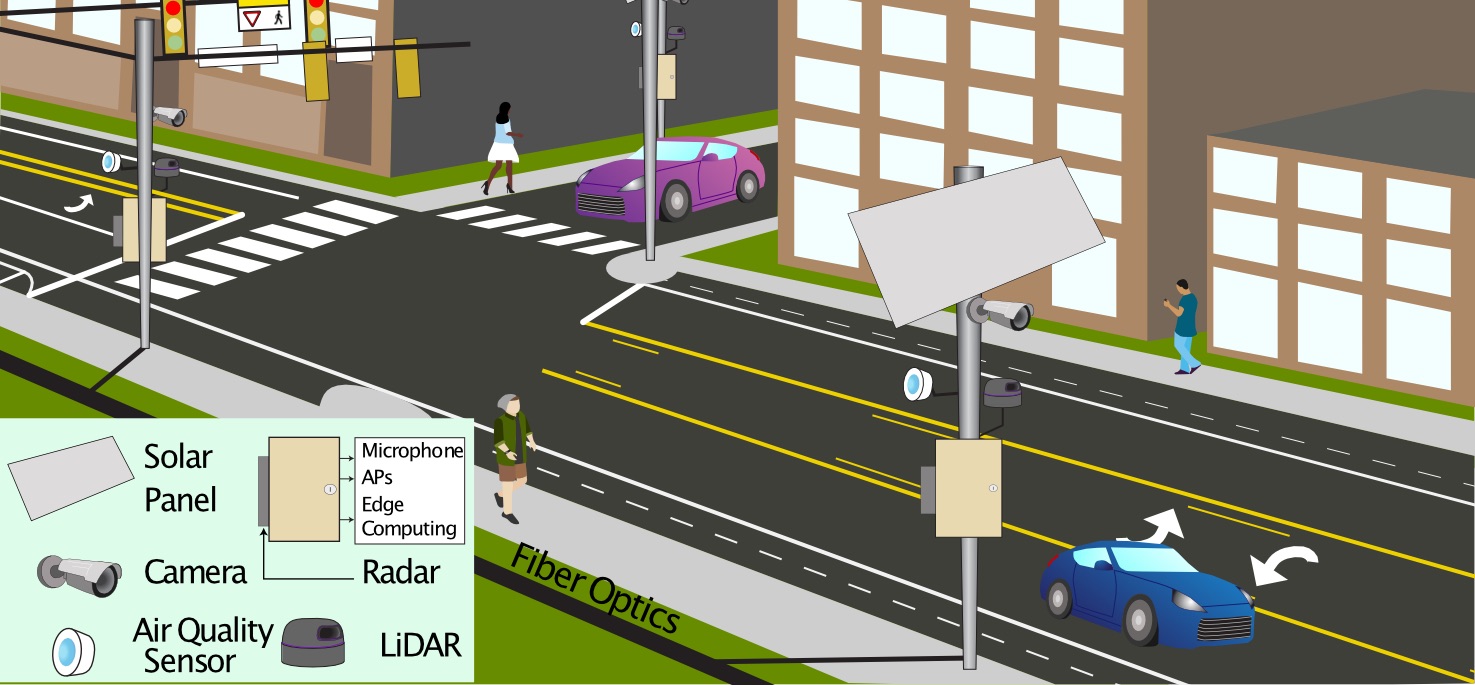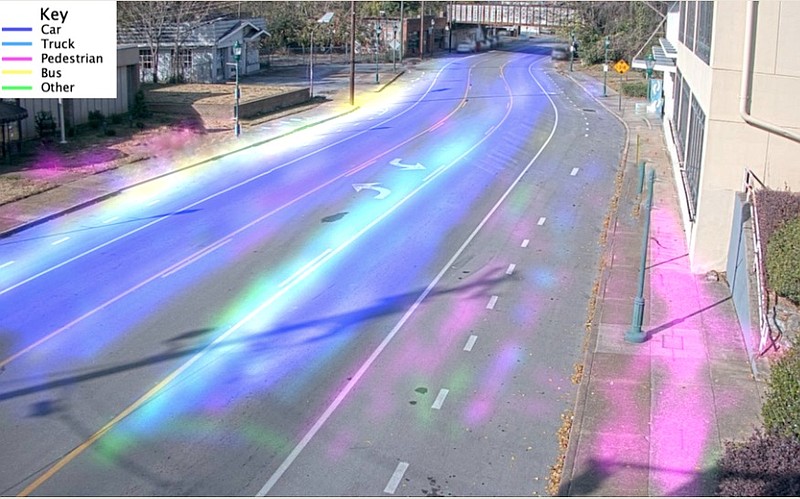At the intersection of Peeples Street and M.L. King Boulevard in downtown Chattanooga, more than 230,000 different "objects" - vehicles, bikes and pedestrians - have passed through in the last two weeks.
Generally, more objects are traveling east rather than west, and there are signs of jay walking and vehicles swerving into bike lanes at times. This information is useful because it helps researchers and students at the Center for Urban Informatics and Progress, or CUIP, determine if a flashing crosswalk in the area or widening bike lanes could make it safer.
The Peeples Street intersection is one of eight between Central Avenue and Market Street along M.L. King Bouelvard outfitted with cameras and sensors to record traffic patterns and safety in the downtown urban area as part of a new, multi-agency "Smart City Corridor."
Mina Sartipi is a graduate-level faculty member at University of Tennessee Chattanooga's College of Engineering and Computer Science, and the director of the Center for Urban Informatics and Progress, which is an independent research entity housed at UTC designed to help Chattanooga be one of the worldwide leaders in Smart City research. The Smart City Corridor was created and will be monitored by CUIP.
CUIP will combine UTC and UT system resources, collaborate with EPB, TVA, Erlanger Hospital, Co.Lab, the Enterprise Center the city of Chattanooga, Chattanooga Department of Transportation and others, while also conducting research with national groups such as the U.S. Department of Energy, the National Science Foundation, Oak Ridge National Laboratory and other universities.
While parts of the corridor have been up and running since January, officials from several of the agencies gathered at the Edney Innovation Center Thursday afternoon for an official launch of the new corridor.
"This is a result of true collaboration. We could have not done what we have done without all the entities involved," Sartipi said. "This is one of the very few urban test beds in the nation."
According to Sartipi, no video is stored in order to protect privacy, and an "Anonymous" live feed on the website, utccuip.com/testbed-2, just shows a black and white feed with the outlines of objects and no identifying elements, like license plate numbers or a person's facial features.
The test bed area was chosen because of the urban environment, and the bike lanes, crosswalks and bike and electric vehicle stations in the area, Sartipi said.
UTC Chancellor Steven Angle said Thursday that the Smart City Corridor is not only an asset for the public, but also for UTC students.
 A design of the the new "Smart City Corridor" on M.L. King Boulevard. The corridor includes more than 20 cameras and several sensors at eight different intersections on M.L. King Boulevard between Central Avenue and Market Street that will measure traffic patterns and air quality. / Photo provided by the Center for Urban Informatics & Progress
A design of the the new "Smart City Corridor" on M.L. King Boulevard. The corridor includes more than 20 cameras and several sensors at eight different intersections on M.L. King Boulevard between Central Avenue and Market Street that will measure traffic patterns and air quality. / Photo provided by the Center for Urban Informatics & Progress"Can you imagine the students involved in this project, who are really helping to define what the future is going to be," Angle said.
José Stovall, a 23-year-old earning his master's degree in data science at the University of Tennessee at Chattanooga, was one of the students who helped create the corridor. He said in just the past two weeks, the intersection of Georgia Avenue and M.L. King Boulevard has already captured 21 million different objects passing through it.
"I've really had a great time building an infrastructure with my colleagues and building up something that is almost a 'plug-and-play' where we could, in theory, take this to other cities," he said.
There are roughly 20 cameras and a variety of sensors set up at the eight intersections between Central Avenue and Market Street on M.L. King Boulevard right now. But in the future, Stovall said they plan to place their own power sources with solar panels between intersections to measure even more data points.
While the Smart City Corridor has only been active for a few months, Sartipi said researchers are already looking at how they can synchronize traffic lights to make them more efficient. The test bed also has sensors to help measure air quality, and Sartipi said it could also be a testbed for 5G capabilities in the future.
Contact staff writer Allison Shirk Collins at ashirk@timesfreepress.com, @AllisonSCollins or 423-757-6651.
